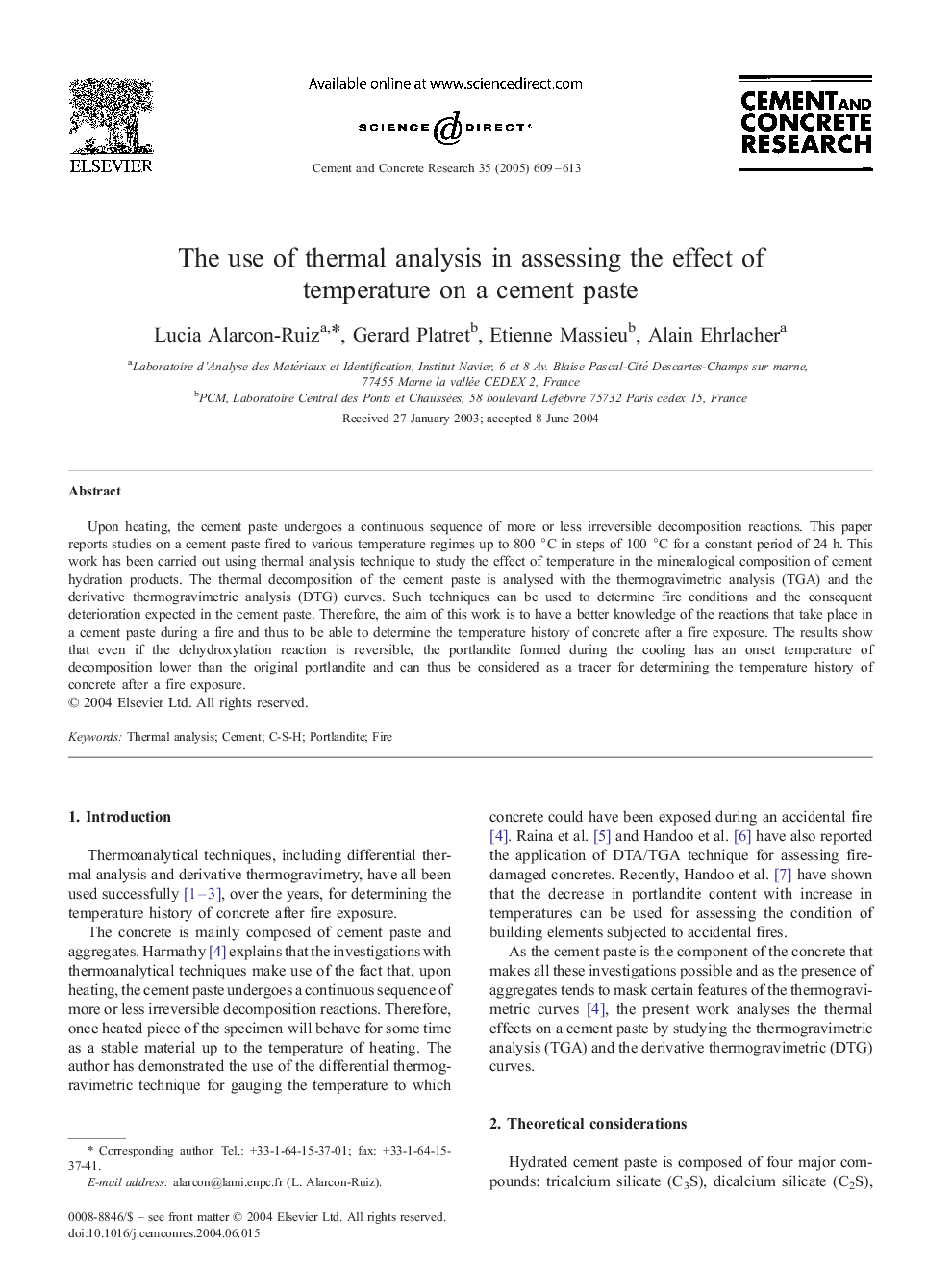| Article ID | Journal | Published Year | Pages | File Type |
|---|---|---|---|---|
| 10622550 | Cement and Concrete Research | 2005 | 5 Pages |
Abstract
Upon heating, the cement paste undergoes a continuous sequence of more or less irreversible decomposition reactions. This paper reports studies on a cement paste fired to various temperature regimes up to 800 °C in steps of 100 °C for a constant period of 24 h. This work has been carried out using thermal analysis technique to study the effect of temperature in the mineralogical composition of cement hydration products. The thermal decomposition of the cement paste is analysed with the thermogravimetric analysis (TGA) and the derivative thermogravimetric analysis (DTG) curves. Such techniques can be used to determine fire conditions and the consequent deterioration expected in the cement paste. Therefore, the aim of this work is to have a better knowledge of the reactions that take place in a cement paste during a fire and thus to be able to determine the temperature history of concrete after a fire exposure. The results show that even if the dehydroxylation reaction is reversible, the portlandite formed during the cooling has an onset temperature of decomposition lower than the original portlandite and can thus be considered as a tracer for determining the temperature history of concrete after a fire exposure.
Related Topics
Physical Sciences and Engineering
Engineering
Industrial and Manufacturing Engineering
Authors
Lucia Alarcon-Ruiz, Gerard Platret, Etienne Massieu, Alain Ehrlacher,
